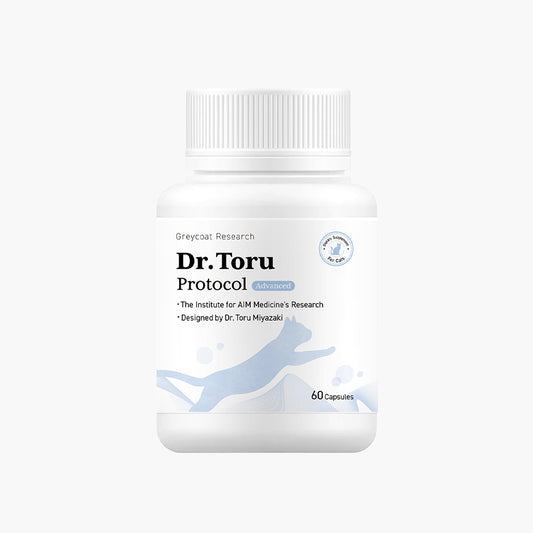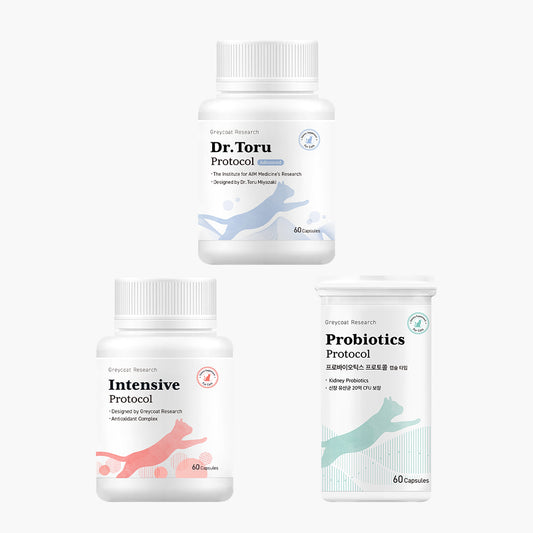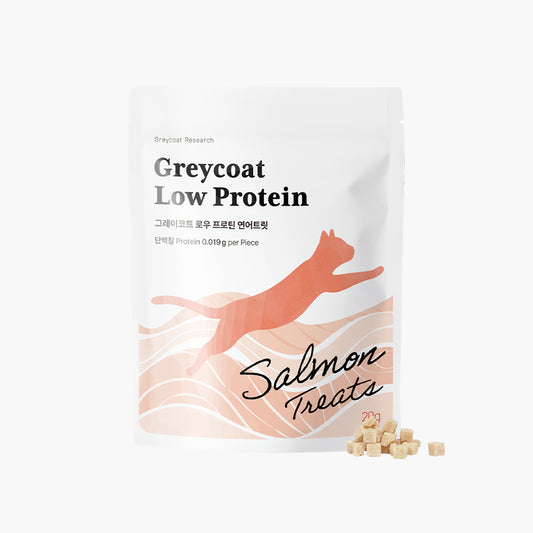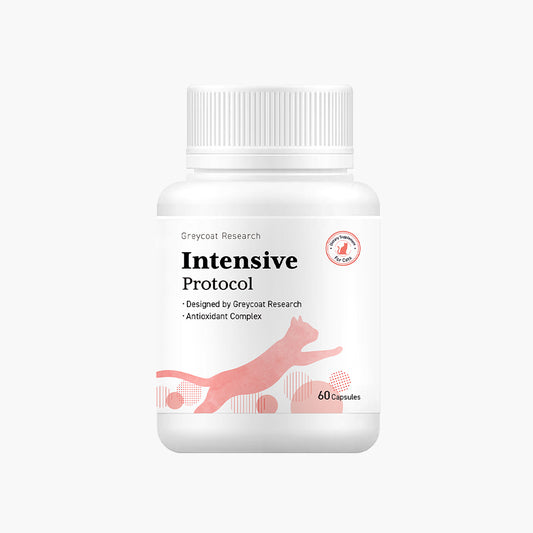
🐱 Is Pet Milk Really Safe for Cats with CKD?
Since 2024, Greycoat Research has provided one-on-one consultation for more than 1,500 cats with chronic kidney disease (CKD) worldwide.
Through these consultations, we've found that many cat guardians turn to pet milk in hopes of increasing their CKD cat’s water intake.
Pet milk may seem like a good option—cats enjoy it, and it appears to provide both hydration and nutrition.
However, when caring for a cat with kidney disease, what seems appealing isn’t always what’s physiologically appropriate.
Not all fluids are equal—especially for cats with kidney disease.
This guide introduces practical, kidney-friendly hydration strategies that support well-being without placing extra strain on the body.
Instead of asking what more to give, consider how to help more gently—and more wisely.
🧪 Three Nutrients That Matter Most for Kidney Health
When feeding a cat with CKD, the key question isn’t “what more can I add?”
but “how can I manage the intake of what matters most?”
These three nutrients deserve close attention, as they directly impact kidney health:
- Protein: Excess intake increases nitrogenous waste → raises risk of uremia
- Phosphorus: Elevated levels worsen kidney damage and inflammation
- Calcium: Overconsumption may lead to stones and calcification
📊 Daily Recommended Intake – Based on a 3kg Cat (Target Intake Range)
| Nutrient | Recommended Intake | Description |
| Protein | 9.0 ~ 10. 0g | Supports muscle maintenance while minimizing metabolic burden |
| Phosphorus | ≤ 130mg | Based on IRIS guidelines |
| Calcium | ≤ 250mg | Helps maintain balance with phosphorus and reduces risk of calcification |
→ These are general target ranges; adjustments may be needed based on body condition and disease stage.
→ These values help guardians make informed dietary decisions based on measurable standards—not guesswork.
📌 Is Renal Food Alone Already Enough?
(Example: 43g/day of Royal Canin Renal Diet)
| Nutrient | Intake | Target Range | Evaluation |
| Protein | 9.89g | 9.0~10.0g |
Near maximum |
| Phosphorus | 128mg | ≤130mg | Near maximum |
| Calcium | 258mg | ≤250mg | Slightly over |
→ Even on renal food alone, key nutrients may already reach or slightly exceed target levels—so adding anything else requires caution.
🥛 Is Pet Milk Helpful for Hydration?
While 100ml of pet milk is often well accepted by cats, it still contains significant amounts of protein, phosphorus, and calcium.
This can place an added burden on cats with CKD.
📊 Same Hydration, Different Nutritional Load
| Feeding Method | Water Intake | Protein | Phosphorus | Calcium |
| Pet Milk 100ml | 100ml | ~2.8g | ~50mg | ~50mg |
| Renal Liquid Treat 5g + 30ml Water × 3/day | 90~100mg | ~1.4g | ~20mg | ~8mg |
→ Typical values based on common formulations. Exact nutrient content may vary by brand—always check the label.
→ While water intake is nearly identical, protein is reduced by about 50%, phosphorus by 60%, and calcium by over 80%.
These numbers aren't just abstract—they directly influence the progression of kidney disease.
💧 So, How Should You Support Hydration?
Cats with CKD are prone to dehydration, and when water intake is low, waste builds up more quickly.
Rather than forcing water, it's best to encourage voluntary drinking.
Here are three practical, low-burden hydration methods you can start using right away:
✅ 1. Mix Renal Liquid Treats with Water
-
Use kidney-safe liquid treats that are low in protein, phosphorus, and sodium
-
Mix with lukewarm water (38–40°C) at a 1:1 to 1:2 ratio
-
Feed 3 times per day with 5g treat + 30ml water
→ Maintains palatability while reducing nutrient load
-
Place small dishes in different spots around the home to encourage your cat to drink voluntarily
✅ 2. Create a Porridge with Renal Wet Food
- Mix wet renal food with warm water at a 1:1 to 1.5 ratio
-
Mash with a fork to create a soft texture—ideal for cats with low appetite
- For cats unable to self-feed, offer small amounts slowly using a syringe
→ Note: Avoid over-diluting, as this may reduce caloric density. Divide into smaller, more frequent meals if needed.
✅ 3. Improve Water Bowl Hygiene and Use Pet Fountains
- Cats are sensitive to water taste, smell, and the material of bowls
-
Use stainless steel, glass, or ceramic bowls
-
Refresh water at least twice daily and wash bowls daily
-
For cats who prefer flowing water, a pet fountain can be very effective
-
Experiment with different heights, shapes, and locations to see what your cat prefers
🧭 A Small Choice Can Change Tomorrow
Kidney care doesn’t begin with “What more can I give?”
but with “How can I protect what’s already enough?”
The water your cat willingly drinks.
A gently diluted, kidney-safe treat.
A spoonful of warm, porridge-like food.
These aren’t just feeding methods—they’re proactive ways to support kidney health.
The small choices you make today can bring comfort now—and support their health tomorrow.






